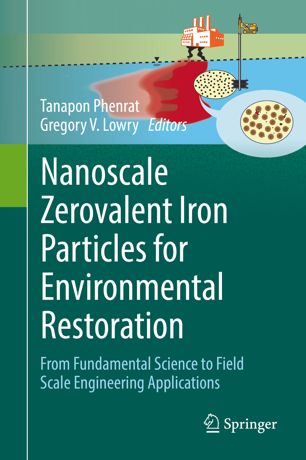

Most ebook files are in PDF format, so you can easily read them using various software such as Foxit Reader or directly on the Google Chrome browser.
Some ebook files are released by publishers in other formats such as .awz, .mobi, .epub, .fb2, etc. You may need to install specific software to read these formats on mobile/PC, such as Calibre.
Please read the tutorial at this link: https://ebookbell.com/faq
We offer FREE conversion to the popular formats you request; however, this may take some time. Therefore, right after payment, please email us, and we will try to provide the service as quickly as possible.
For some exceptional file formats or broken links (if any), please refrain from opening any disputes. Instead, email us first, and we will try to assist within a maximum of 6 hours.
EbookBell Team

0.0
0 reviewsThis is the first complete edited volume devoted to providing comprehensive and state-of-the art descriptions of science principles and pilot- and field-scaled engineering applications of nanoscale zerovalent iron particles (NZVI) for soil and groundwater remediation. Although several books on environmental nanotechnology contain chapters of NZVI for environmental remediation (Wiesner and Bottero (2007); Geiger and Carvalho-Knighton (2009); Diallo et al. (2009); Ram et al. (2011)), none of them include a comprehensive treatment of the fundamental and applied aspects of NZVI applications. Most devote a chapter or two discussing a contemporary aspect of NZVI. In addition, environmental nanotechnology has a broad audience including environmental engineers and scientists, geochemists, material scientists, physicists, chemists, biologists, ecologists and toxicologists. None of the current books contain enough background material for such multidisciplinary readers, making it difficult for a graduate student or even an experienced researcher or environmental remediation practitioner new to nanotechnology to catch up with the massive, undigested literature. This prohibits the reader from gaining a complete understanding of NZVI science and technology. In this volume, the sixteen chapters are based on more than two decades of laboratory research and development and field-scaled demonstrations of NZVI implementation. The authors of each chapter are leading researchers and/or practitioners in NZVI technology. This book aims to be an important resource for all levels of audiences, i.e. graduate students, experienced environmental and nanotechnology researchers, and practitioners evaluating environmental remediation, as it is designed to involve everything from basic to advanced concepts.